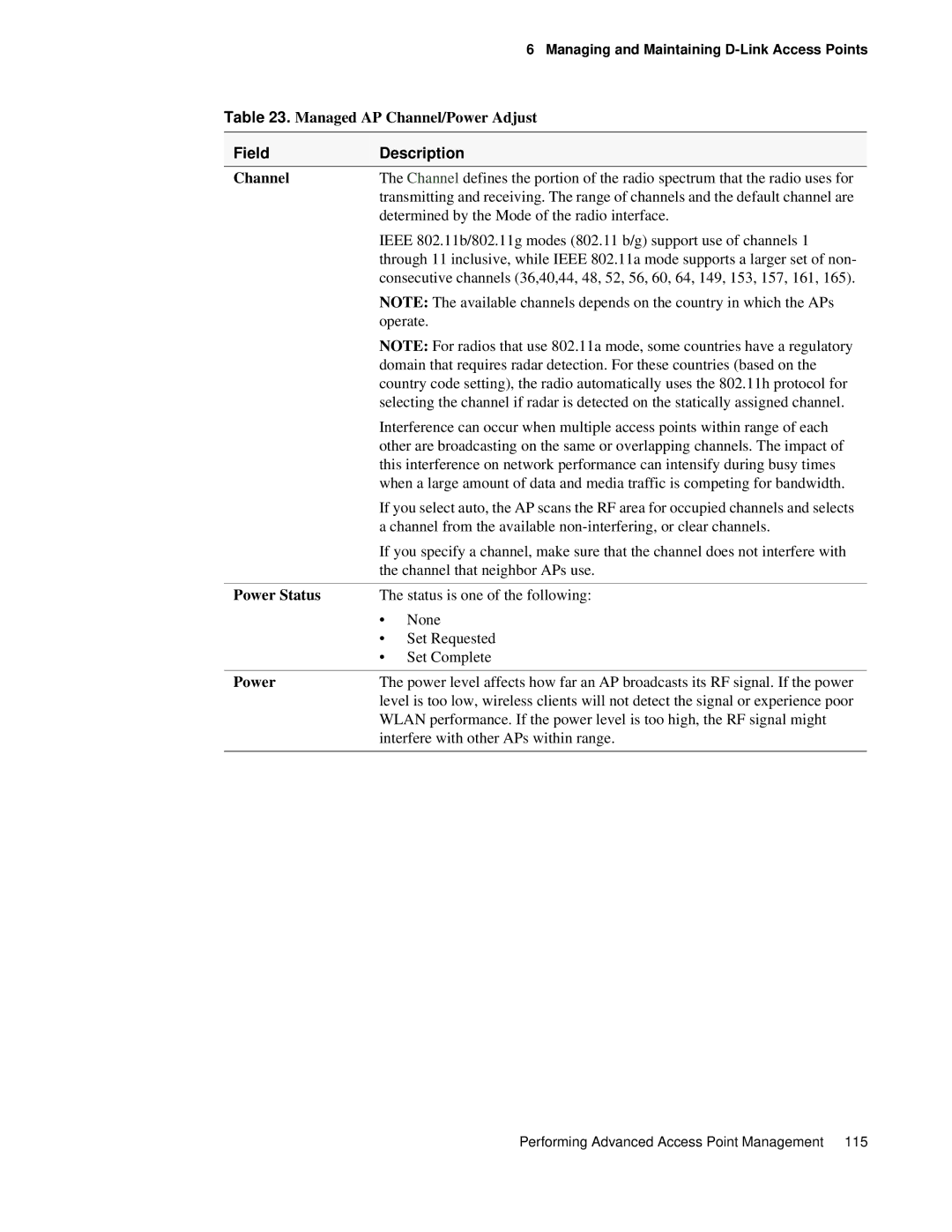|
| 6 Managing and Maintaining |
Table 23. Managed AP Channel/Power Adjust | ||
|
| |
Field | Description | |
Channel | The Channel defines the portion of the radio spectrum that the radio uses for | |
| transmitting and receiving. The range of channels and the default channel are | |
| determined by the Mode of the radio interface. | |
| IEEE 802.11b/802.11g modes (802.11 b/g) support use of channels 1 | |
| through 11 inclusive, while IEEE 802.11a mode supports a larger set of non- | |
| consecutive channels (36,40,44, 48, 52, 56, 60, 64, 149, 153, 157, 161, 165). | |
| NOTE: The available channels depends on the country in which the APs | |
| operate. | |
| NOTE: For radios that use 802.11a mode, some countries have a regulatory | |
| domain that requires radar detection. For these countries (based on the | |
| country code setting), the radio automatically uses the 802.11h protocol for | |
| selecting the channel if radar is detected on the statically assigned channel. | |
| Interference can occur when multiple access points within range of each | |
| other are broadcasting on the same or overlapping channels. The impact of | |
| this interference on network performance can intensify during busy times | |
| when a large amount of data and media traffic is competing for bandwidth. | |
| If you select auto, the AP scans the RF area for occupied channels and selects | |
| a channel from the available | |
| If you specify a channel, make sure that the channel does not interfere with | |
| the channel that neighbor APs use. | |
|
| |
Power Status | The status is one of the following: | |
| • | None |
| • | Set Requested |
| • | Set Complete |
|
| |
Power | The power level affects how far an AP broadcasts its RF signal. If the power | |
| level is too low, wireless clients will not detect the signal or experience poor | |
| WLAN performance. If the power level is too high, the RF signal might | |
| interfere with other APs within range. | |
|
|
|
Performing Advanced Access Point Management 115
